MFA Professional Practice Seminar 2022
Reflections from MFA students and Professor Rebekah Modrak
In the Fall 2022 semester, second-year MFA students enrolled in Graduate Seminar for Professional Practices embarked on travels to New York and around the world to explore options for post-graduation creative work. The group traveled to New York in person, and then spent four days virtually hosting guests from Mexico City, Chicago, Champaign-Urbana, and (more from) New York.
The informative experience was an opportunity to impact the students’ research, creative practice and the future of their professional life.
Just take it from the MFA Graduate Seminar for Professional Practices, comprised of Oksana Briukhovetska, Emerson Granillo, Michelle Hinojosa, Nick La Marca, Sebastian Llovera, Barbara Pearsall, and Peter Stack.
The exclusive report below was written by the students and Professor Rebekah Modrak to reflect on the experiences, speakers, and takeaways from the MFA program.
To learn more about the MFA program, visit stamps.umich.edu/graduate-programs/mfa.
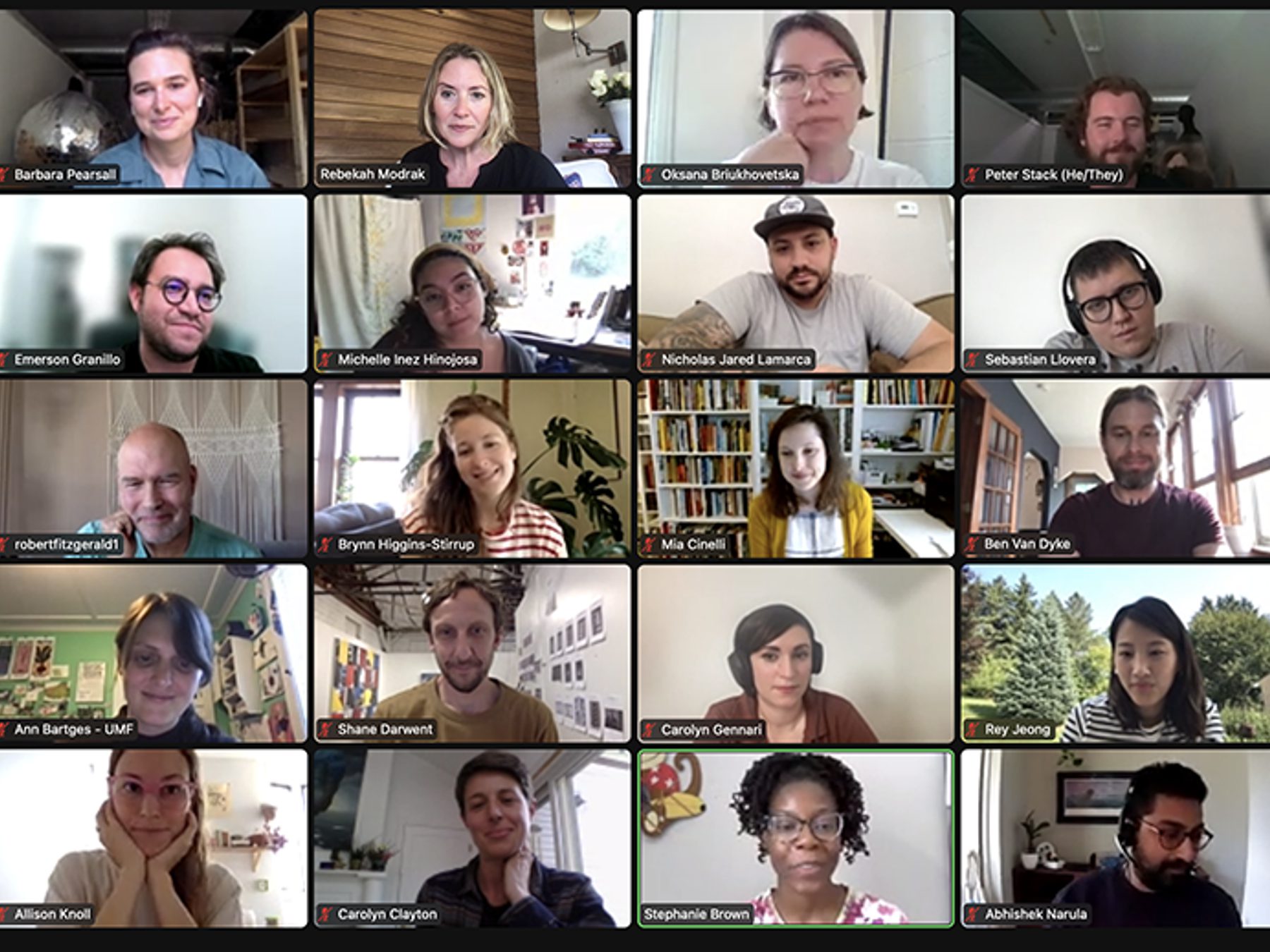
Visit with Stamps Alums: Sept. 17, 2022
A positive lesson from the group’s previous virtual semesters was learning to reconnect with the wealth of resources and experiences lived by our Stamps alums. Over the years, they shifted from meeting with three or four alums in New York to gathering with sixteen alums zooming in from Vancouver, Tulsa, North Adams, Atlanta, Philadelphia, New York, Alfred, Lansing, and more. This year, they began with introductions as a large group and then cycled through two panels exploring what a post-graduate career looks like, how their art practice has expanded in unanticipated ways, and how they’ve cultivated a post-MFA art community.
The following alums participated: Ann Barthes, Stephanie Brown, Mia Cinelli, Carolyn Clayton, Shane Darwent, Robert Fitzgerald, Carolyn Gennari, Brynn Higgins-Stirrup, Rey Jeong, Chris Landau, Abhishek Narula, Emily Schiffer, Ben Van Dyke, Mary Willette, Kayla Romberger, and Allison Knoll.
“The Art Community panel talked about residences and the community they can provide and gave us residency names that might be helpful. Hearing how to market yourself to be a better candidate for jobs was helpful.”
— Peter Stack

New York City Trip: Oct. 15 – 17, 2022
The students researched and identified individuals and organizations with expertise in areas of interest, and created an itinerary to address their creative work, career, and life questions.
“The professional development trip to New York City was significant because it provided me new insights into ways that my work can exist in the world post-graduation and it gave me renewed interest and excitement to return to the city after I graduate. Working across the arts in New York City for the past decade, I wasn’t expecting to learn anything new about the arts there, but I was wrong. While living there, it’s hard to see how quickly things change. It’s only after stepping away that I see how different my former home is now, and I was delighted to learn about the ways the edges of what art can be has expanded and about the exciting new opportunities available to artists in the city.
— Barbara Pearsall
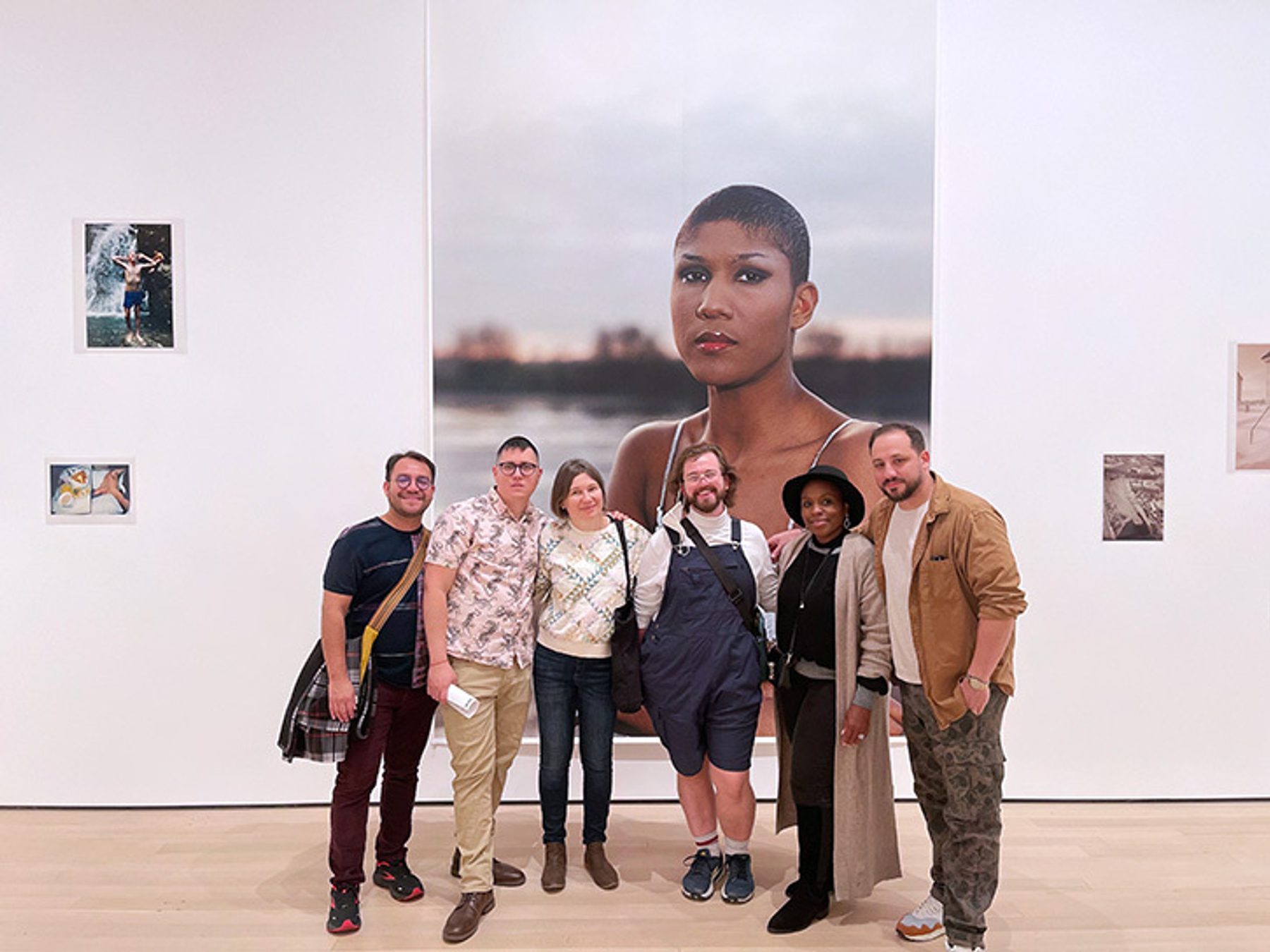
Nzingah Oyo, a Brooklyn-based visual artist, photographer and curator who creates images pivotal to the Muslim woman, took MFA students on a guided tour of exhibitions at MoMA and the New Museum.
“I was really excited to see Wolfgang Tillmans To Look Without Fear retrospective at the MOMA. I have admired his work since high school and to be in an installation where he took up multiple rooms was absolutely magical. The way he challenged the viewer was not only with this beautiful imagery but the way the exhibition was presented was insightful. I loved how he invited the viewer to be able to engage with his work without frames and glass in the first two rooms (normally causes reflections and glare from the lights). He presented staged and mundane photography of his environment and it really speaks to his comment ‘if one thing matters, then everything matters.’
[Nzingah Oyo] mentioned artists/events such as Ayana M Evans, ICP Book Fair, Carlos Martiel. It’s wonderful to hear about other artists’ journeys.”
— Emerson Granillo
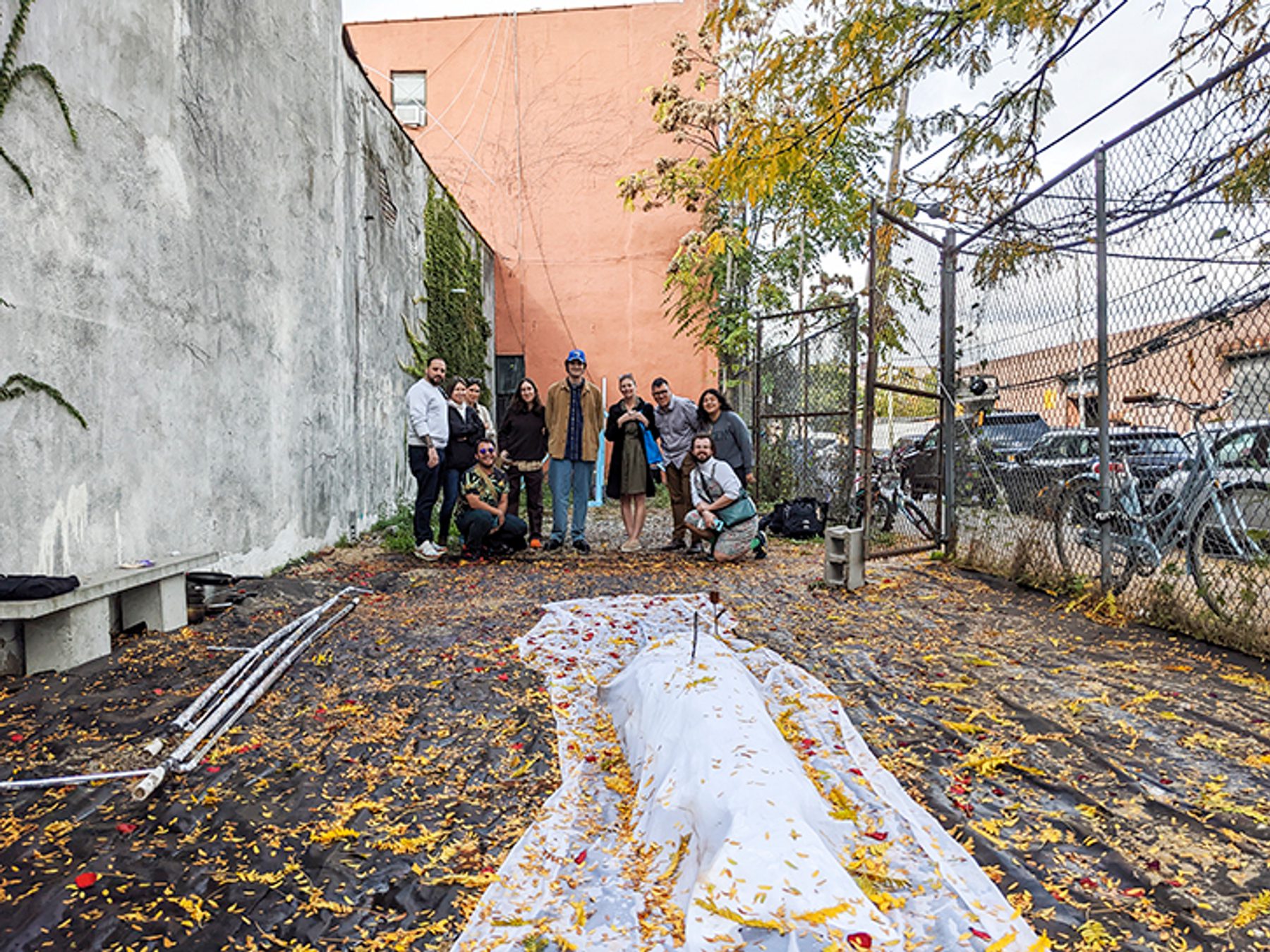
Students met with Jacob Jackmauh and Lina McGinn, co-directors of Art Lot, a not-for-profit, outdoor, contemporary art space located in Brooklyn, NY that encourages emerging and mid-career artists to explore ideas in a unique public context.
“Art Lot opened up possibilities for understanding how to create artist-run spaces in an official capacity. Understanding the nuances, the rules and the background of what it takes to run a space is beneficial if we ever decide to create collaboratively with other artists in the same manner.”
— Nick La Marca
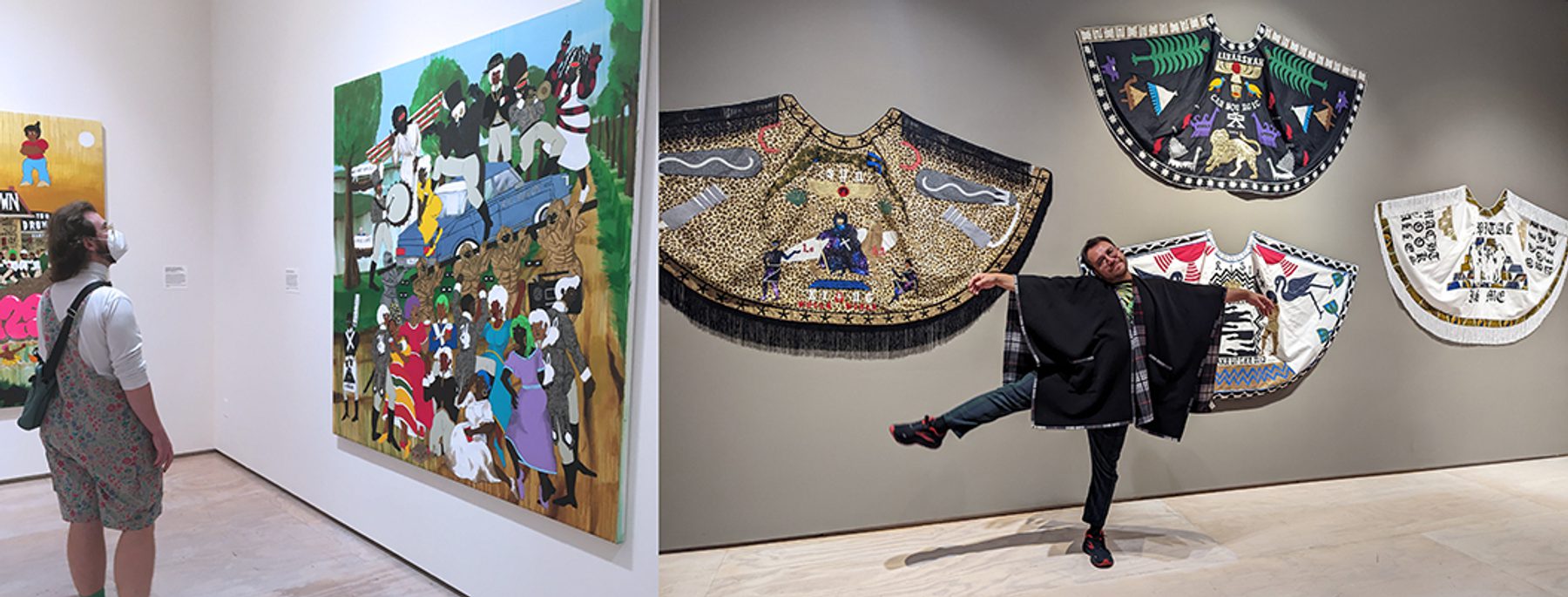
The group also visited the following PS1 Exhibitions: Jumana Manna: Break, Take, Erase, Tally, Umar Rashid: Ancien Régime Change 4, 5, and 6, and Frieda Toranzo Jaeger: Autonomous Drive.
“MoMA PS1 ended up being a highlight for me! I was very excited to see the paintings from Frieda Toranzo Jaeger, the ceramics and films by Jumana Manna and the delightful characters around the building by Poncili Creacion. It was particularly interesting to my practice to see hinged, movable, modular canvases from Jaeger. I also just love seeing how religious symbolism and futurity, in this case queer futurity, are used by painters.”
— Michelle Hinojosa
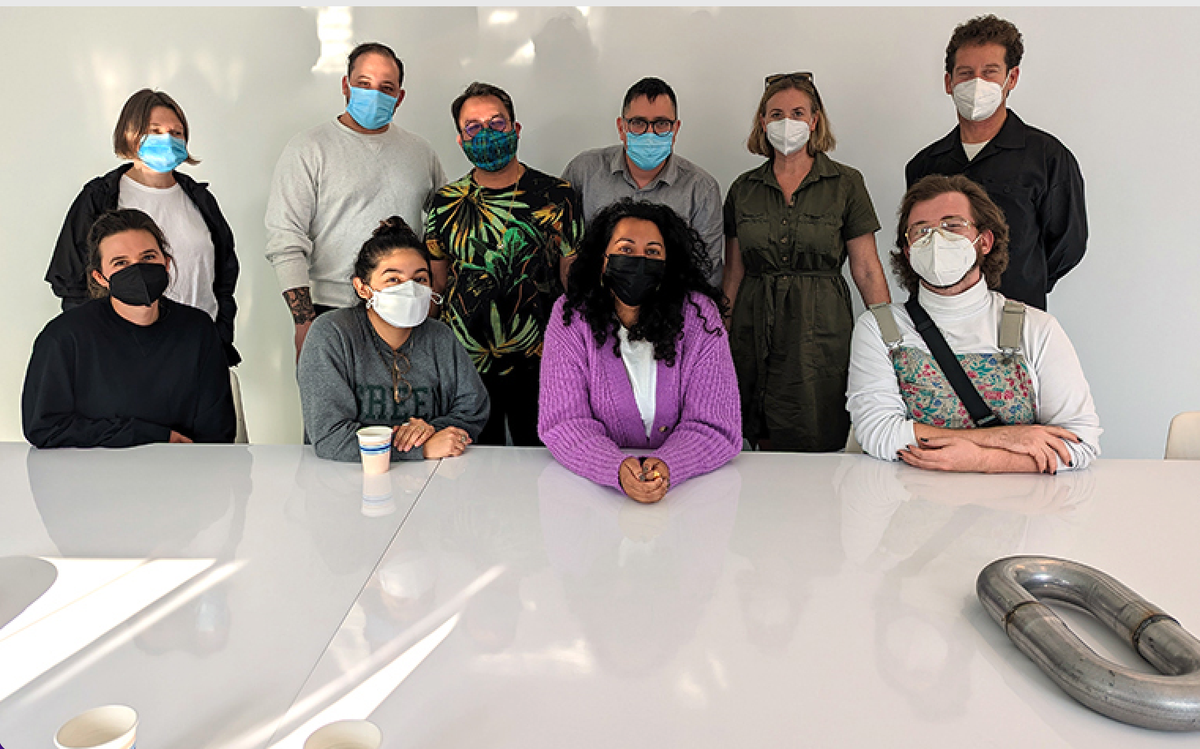
While in New York, the group met Diya Vij. Vij is curator of Creative Time and has held programming, curatorial, and communications positions at the High Line, the New York City Department of Cultural Affairs (DCLA), and the Queens Museum. She recently worked to commission Charles Gaines’ monumental sculpture Moving Chains, installed at Governors Island through June 2023.
“Meeting with Diya was the highlight of the trip for me. I was incredibly excited about the questions she was asking of public art and social practice, and then the ways her practice and experience expands the edges and possibilities of what art can be. She encouraged me to continue thinking more expansively and radically about the form my work could take and the ways an audience can engage with it. Professionally, she models the ways that following the questions that drive her lead her to a career that she shaped. She spoke about how she never realized that her interest in politics and art could align, but how she continued to follow opportunities that were exciting to both of these interests. Post-graduation conversation often stresses me out because I can’t imagine what future I want – the thing that feels right doesn’t exist yet. Talking to Diya gave me confidence in navigating this uncertainty and the hope that if I continue to follow what excites me, maybe one day it will emerge into the career I’ve always wanted but haven’t ever known.”
— Barbara Pearsall
NYFA Work Sample Review: Oct. 25, 2022
The New York Foundation for the Arts (NYFA) offers Resources, Programs, Coaching, Awards and Grants (over $2 million in cash grants to individual artists). The NYFA Work Sample Review is an opportunity for artists to go through a mock NYFA grant application process while watching the NYFA review team review their work.
The group prepared for the NYFA work sample review with a series of exercises designed to help students describe work clearly and descriptively. Students submitted their mock NYFA applications online and then attended a review of their work by Louky Keijserss Koning (with experience as an independent curator, a gallery manager and owner, and an art appraiser) and Felicity Hogan, director of NYFA Learning.
The main, general advice they gave about NYFA applications is that most artists show too much in their application when they would be better off showing one strong body of work. The panel reviews hundreds or thousands of applications so be concise and get straight to the point. With video, panelists start with the very first second but may not watch beyond the first ten. With still images, you may have 20 seconds. Those first few seconds/images need to entice the panel to keep looking. If you’re setting up an exhibition, even for a small group, dedicate time to document your work well. Ask, “when I’m applying for funding, what do I want the panel to see” and document from this perspective. Avoid too many “I” statements.
“It was helpful to have feedback from people who just have that amount of information about your work. It makes me think about being really deliberate about what I show first.”
— Sebastian Llovera
“It was useful to do this as a group because I learned a lot from listening to the panel’s response to others. I saw it as a process.”
— Oksana Briukhovetska

Around the World Virtual Trips: Nov. 1 and 22 and Dec. 6, 2022
The group held a series of virtual conversations in November and December, hosting the following guests from around the world:
Naomi Rincón Gallardo is a multidisciplinary Mexican artist whose work addresses the “creation of counterworlds” or alternative worlds in the Global South from a critical perspective of Eurocentrism, extractivism and the creed of development through an anti-racist and decolonial feminism.
“The talk of Naomi Rincón Gallardo was very interesting and inspiring for me. Especially her reflections on metaphorical and symbolic space, myth revisionism, queer of color aesthetic, and dismantling order of coloniality. It was exciting to know how in her works she read myth through queer lenses, borrowing strategies from surrealism, dreams, and how she pursues the idea of the radical openness to the unknown and of creating an ephemeral but meaningful world. I was interested in her references to Cherrie Moraga and her book ‘The Bridge Called My Back,’ as well as the book ‘Theory in the Flesh.’”
— Oksana Briukhovetska
Dan Cameron is a curator of contemporary art who writes about art, and who was the first American curator (in 1982) to organize a museum exhibition on LGBTQ art.
“Dan’s insight was as a curator and organizer. It was most interesting to hear about his latest and future work looking towards rural spaces as places for art presentation. This is tricky work as entering into a community you’re not native to can reek of colonialism and gentrification. But Dan detailed how he has gone about doing his research on these rural communities, and then trying to make the art presentations, for and about the locals, highlighting their talent and what makes their space interesting. As a rural artist myself, I am very interested in the idea that there might be value in not moving to the big city, that making roots in my rural community and sharing my art there might be possible and be significant.”
— Peter Stack
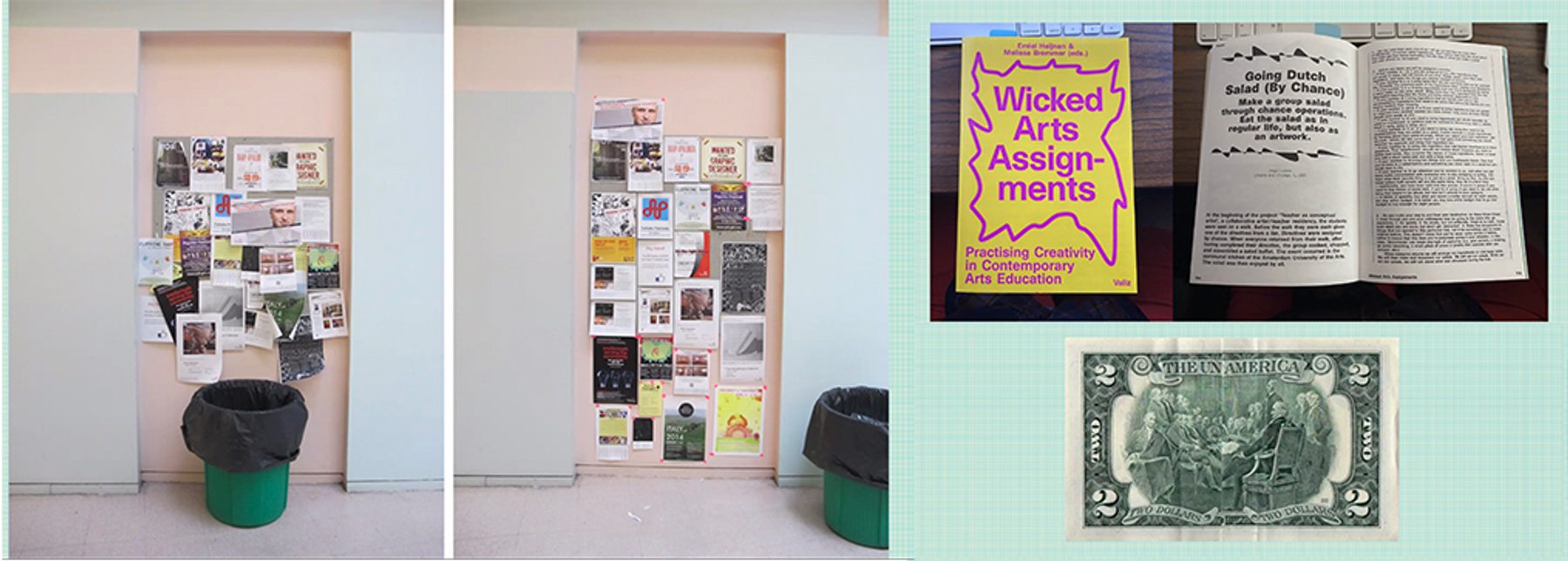
Jorge Lucero is a Mexican-American artist and associate professor of art education in the School of Art and Design at the University of Illinois, Urbana-Champaign. His current research is concerned with how contemporary art practice functions as permissions for a teaching practice that is also a highly sophisticated art practice.
“I loved that Jorge began our conversation by sharing the importance of rehearsing one’s own narrative as a form of education. And I was even more excited to see the ways his narrative formed his current practice. Jorge’s work challenges me to think more expansively about what art and an art practice can look like, and he gives me important insight into better understanding my opportunities within the academy.”
— Barbara Pearsall
“One project was simultaneously an archive and artwork where conceptual art and teaching practices meet. I love the idea of taking a practical stance with conceptual thinking. He utilizes his world of thought to push against what we think students need for learning.”
— Nick La Marca

Marc Fischer is an artist, publisher, and teacher based in Chicago, IL. He started Temporary Services and Half Letter Press Barack, and works with students in the Obama School of Leadership and STEM SD163 in south suburban Chicago Heights.
“Marc insightfully reframed ‘professional practices’ to ‘sustainable practices.’ He made clear that sustainable is the ability to create art practices in unexpected forms. His superpower is facilitating artist residencies in unexpected places: courtrooms, restaurants, and through stay-at-home zines that get displayed on the street, and his work inspired me to think expansively about activating spaces and interactions in my own practice.”
— Barbara Pearsall
Arlene Davila is a professor of anthropology and American studies at New York University, and a recognized public intellectual focusing on questions of cultural equity, Latinx and critical race studies. She is the founding director of The Latinx Project, an interdisciplinary space focusing on Latinx art and culture and hosting artists and curatorial projects at NYU.
“Arlene Davila was fun and a great inspiration as a fellow Puerto Rican artist. I resonated with her conversation about how not all Latinos are the same and some are more highly regarded than others.”
— Nick La Marca
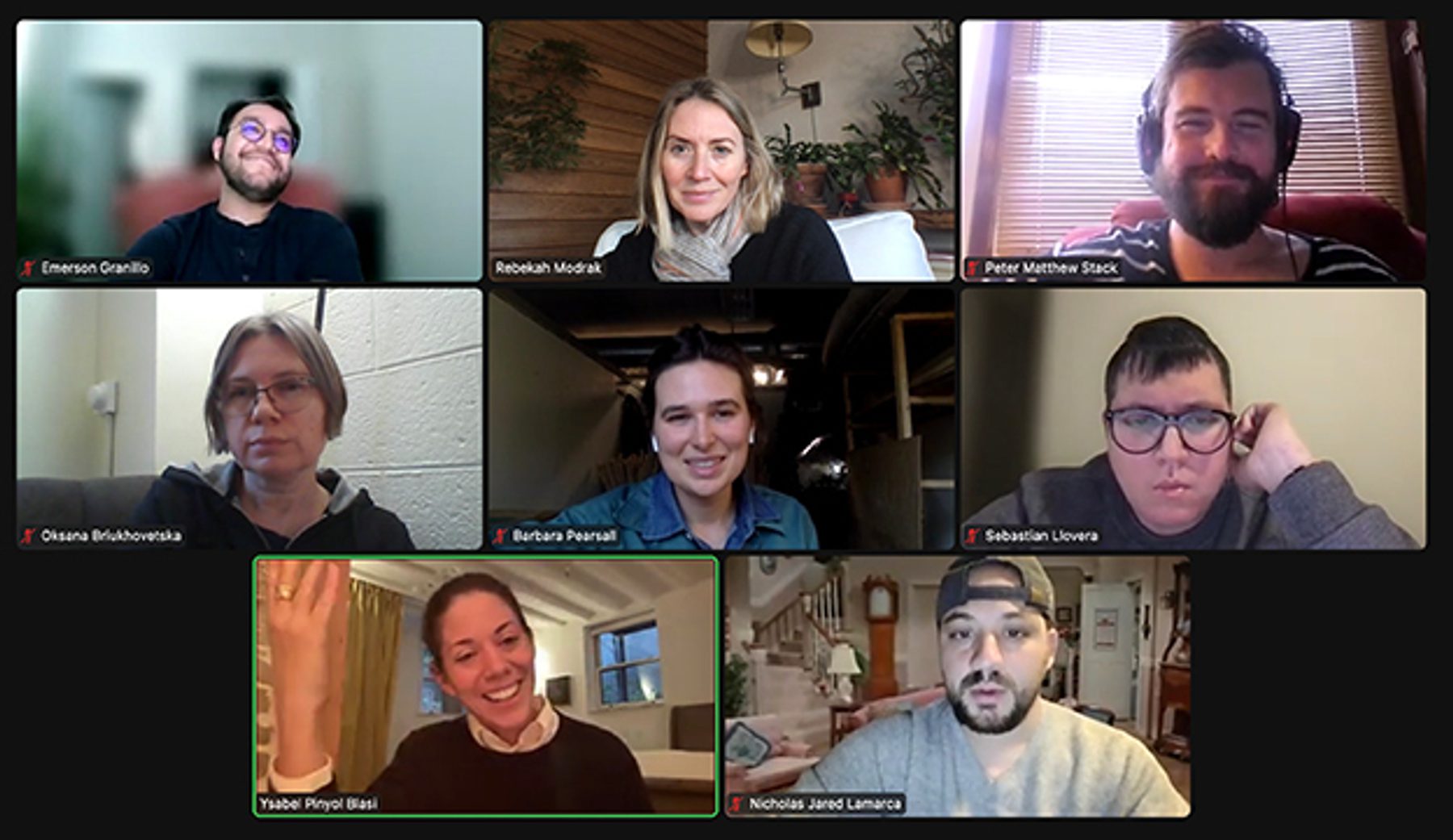
Ysabel Pinyol Blasi is executive director and co-founder of Monira Residencies at Mana Contemporary.
“Learned: When sending work out from the studio, be very specific with how it should be displayed. Make sure it is ready. Presentation is just as important as the work. Treat each opportunity differently, be open to new ideas, explore new ways to present in different locations.”
— Peter Stack
John Evangelista is the founder of Evangelista & Associates, a financial management service. He gave a presentation on the foundation of financial health.
“Very helpful collection of advice on how to hold your own life economy, how to make priorities and think strategically. I liked the idea of collecting data without judgment and the necessity for women to be economically independent.”
— Oksana Briukhovetska
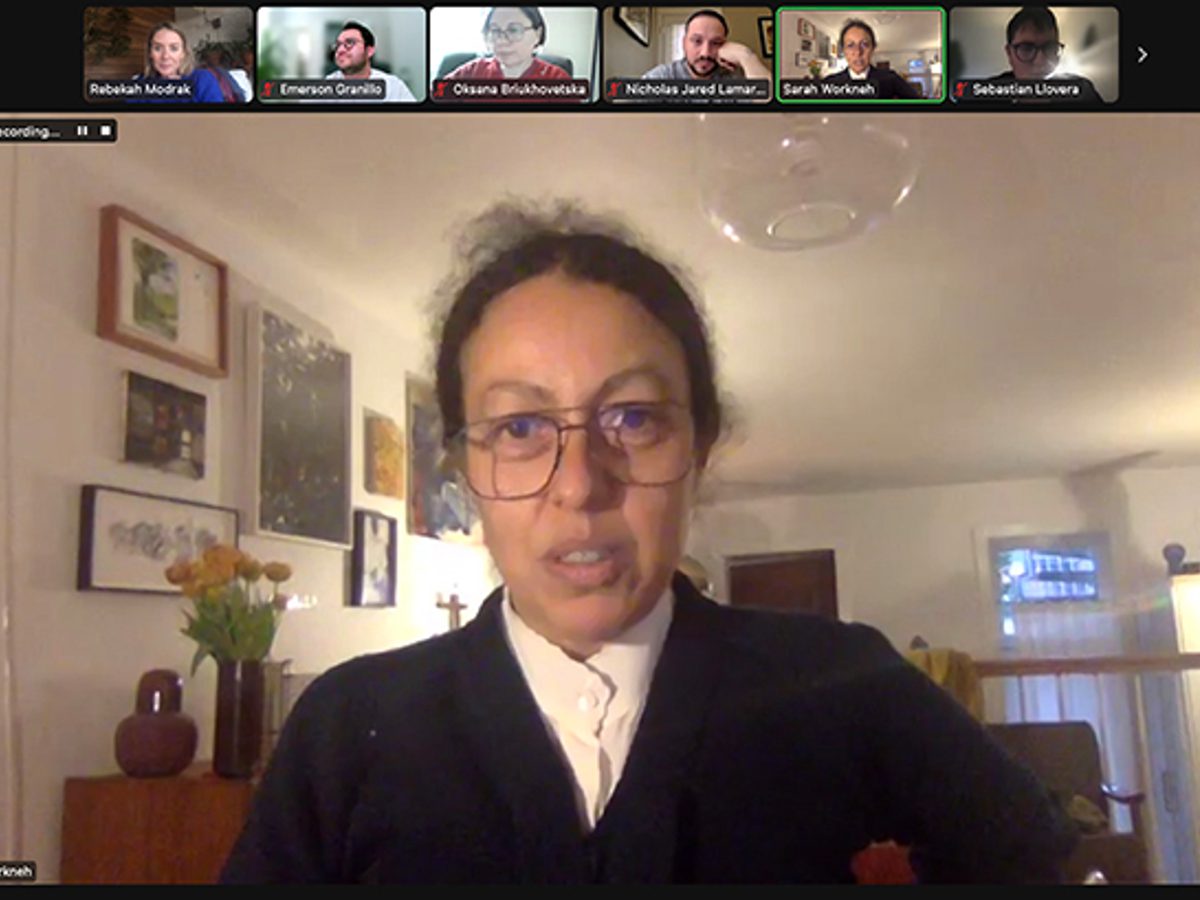
Sarah Workneh has worked in alternative education spaces for artists for over 20 years. She has served as co-director of the Skowhegan School of Painting & Sculpture since 2010.
Sarah painted a beautiful picture of the Skowhegan school and really sold me on applying, and applying early! She was candid and kind in answering our questions. I also really enjoyed listening to her path to Skowhegan and her relationship with residencies. She said some wonderful things about alternative education that really piqued my interest in residencies more.
— Michelle Hinojosa
Contributors: Rebekah Modrak, Oksana Briukhovetska, Emerson Granillo, Michelle Hinojosa, Nick La Marca, Sebastian Llovera, Barbara Pearsall, and Peter Stack
